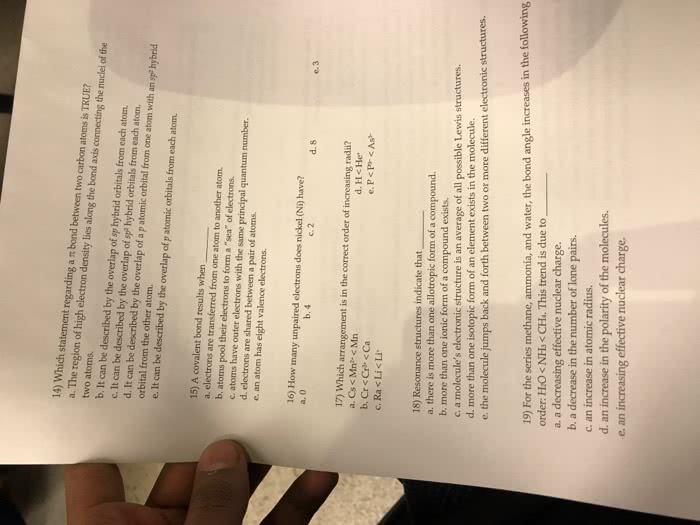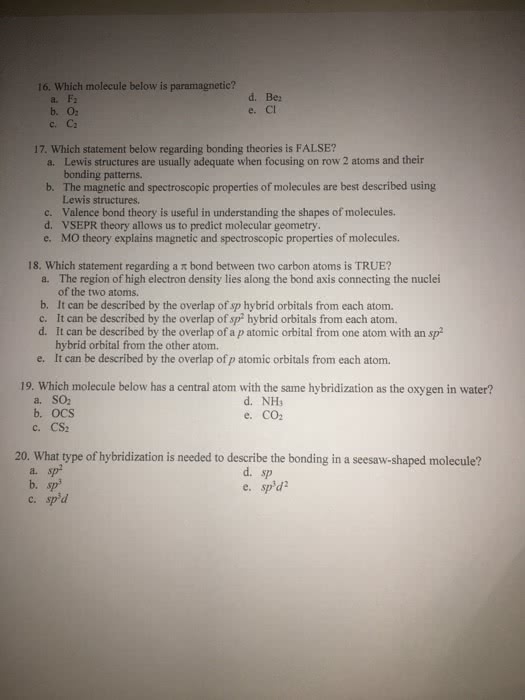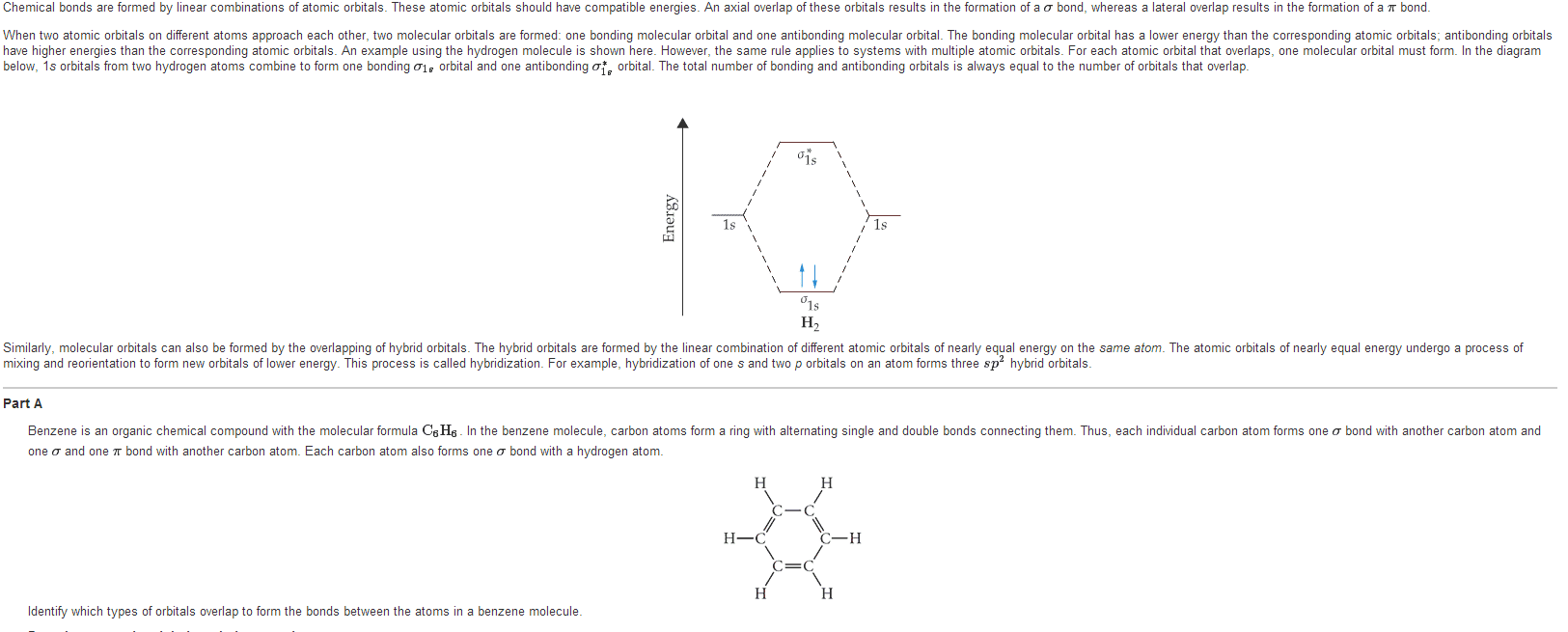CHEM 1061 Chapter Notes - Chapter 11: Covalent Bond, Valence Electron, Pi Bond
40 views2 pages
Document Summary
Covalent bond forms when the orbitals of two atoms overlap and a pair of electrons occupy the overlap region. Maximum capacity for two electrons that have opposite (paired) spins. Maximum overlap of bonding of bonding orbitals. The greater the orbital overlap, the closer the nuclei are to the electrons, and the stronger the bond. Valence electrons in the isolated atoms become new orbitals in the molecule. Number of hybrid orbitals formed equals the number of atomic orbitals mixed. The type of hybrid orbitals formed varies with the types of atomic orbitals mixed. The shape and orientation of a hybrid orbital maximize its overlap with the orbital of the other atom in the bond. D-orbital hybridization is less important: shapes with expanded valence shells. Models of orbital overlap and the types of covalent bonds. Pi bond is weaker than a sigma bond. Orbitals overlap less side to side than end to end.
Get access
Grade+20% off
$8 USD/m$10 USD/m
Billed $96 USD annually

Homework Help
Study Guides
Textbook Solutions
Class Notes
Textbook Notes
Booster Class
40 Verified Answers
Class+
$8 USD/m
Billed $96 USD annually

Homework Help
Study Guides
Textbook Solutions
Class Notes
Textbook Notes
Booster Class
30 Verified Answers
Related textbook solutions
Chemistry: Structure and Properties
2 Edition,
Tro
ISBN: 9780134293936
Basic Chemistry
5 Edition,
Timberlake
ISBN: 9780134138046
Principles of Chemistry Molecular Approach
4th Edition,
Tro
ISBN: 9780134112831
Chemistry: Structure and Properties
2nd Edition,
Tro
ISBN: 9780134293936
Principles of Chemistry Molecular Approach
3rd Edition, 2014
Tro
ISBN: 9780321971944
Chemistry: A Molecular Approach
3rd Edition,
Tro
ISBN: 9780321809247
Chemistry: A Molecular Approach
5th Edition,
Tro
ISBN: 9780134874371
Principles of Chemistry: A Molecular Approach
4th Edition,
Tro
ISBN: 9780134895741
Chemistry: The Central Science
14th Edition, 2017
Brown
ISBN: 9780134414232


